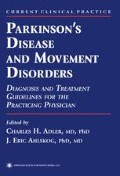General Overview
Botulinum toxins are the most deadly neurotoxins known and are produced by the anaerobic bacterium Clostridium botulinum. C. botulinum produces seven antigenically (immunologically) distinct neurotoxins: A, B, C1, D, E, F, and G. These neurotoxins block neuromuscular transmission, resulting in both skeletal and smooth muscle paralysis. Clinically, botulism can occur after ingestion of contaminated food or from a wound infection. Signs of botulism can include limb paralysis, facial weakness, ophthalmoplegia, dysarthria, dysphagia, dyspnea progressing to respiratory arrest, constipation progressing to ileus, and urinary retention.
Access this chapter
Tax calculation will be finalised at checkout
Purchases are for personal use only
Preview
Unable to display preview. Download preview PDF.
Selected Reading
Brin MF, Blitzer A, Herman S, Stewart C. Oromandibular dystonia: treatment of 96 patients with botulinum toxin type A, in Therapy With Botulinum Toxin ( Jankovic J, Hallett M eds), Marcel Dekker, New York, 1994, pp. 429–435.
Brin MF, Lew MF, Adler CH, Cornelia CL, Jankovic J, O’Brien C, Murray JJ, Wallace JD, Willmer-Holme A, Koller M. Safety and efficacy of NeuroBloc (botulinum toxin type B) in type A-resistant cervical dystonia. Neurology 1999; 53: 1431–1438.
Greene P. Controlled trials of botulinum toxin for cervical dystonia: a critical review, in Therapy With Botulinum Toxin ( Jankovic J, Hallett M eds), Marcel Dekker, New York, 1994, pp. 279–287.
Greene P, Fahn S, Diamond B. Development of resistance to botulinum toxin type A in patients with torticollis. Mov Disord 1994; 9: 213–217.
Jankovic J. Botulinum toxin in movement disorders. Curr Opin Neurol 1994; 7: 358–366. Jankovic J, Schwartz K. Botulinum toxin treatment of tremors. Neurology 1991; 41: 1185–1188.
Price J, Farish S, Taylor H, O’Day J. Blepharospasm and hemifacial spasm. Randomized trial to determine the most appropriate location for botulinum toxin injections. Ophthalmology 1997; 104: 865–868. Pulmann SL, Greene P, Fahn S, Pedersen SF. Approach to the treatment of limb disorders with botulinum toxin A. Experience with 187 patients. Arch Neurol 1996; 53: 617–624.
Schantz EJ, Johnson EA. Botulinum toxin: the story of its development for the treatment of human disease. Perspect Biol Med 1997; 40: 317–327.
Yoshimura DM, Aminoff MJ, Tami TA, Scott AB. Treatment of hemifacial spasm with botulinum toxin. Muscle Nerve 1992; 15: 1045–1049.
Editor information
Editors and Affiliations
Rights and permissions
Copyright information
© 2000 Springer Science+Business Media New York
About this chapter
Cite this chapter
Adler, C.H. (2000). Botulinum Toxin Treatment of Movement Disorders. In: Adler, C.H., Ahlskog, J.E. (eds) Parkinson’s Disease and Movement Disorders. Current Clinical Practice. Humana Press, Totowa, NJ. https://doi.org/10.1007/978-1-59259-410-8_31
Download citation
DOI: https://doi.org/10.1007/978-1-59259-410-8_31
Publisher Name: Humana Press, Totowa, NJ
Print ISBN: 978-1-61737-095-3
Online ISBN: 978-1-59259-410-8
eBook Packages: Springer Book Archive

